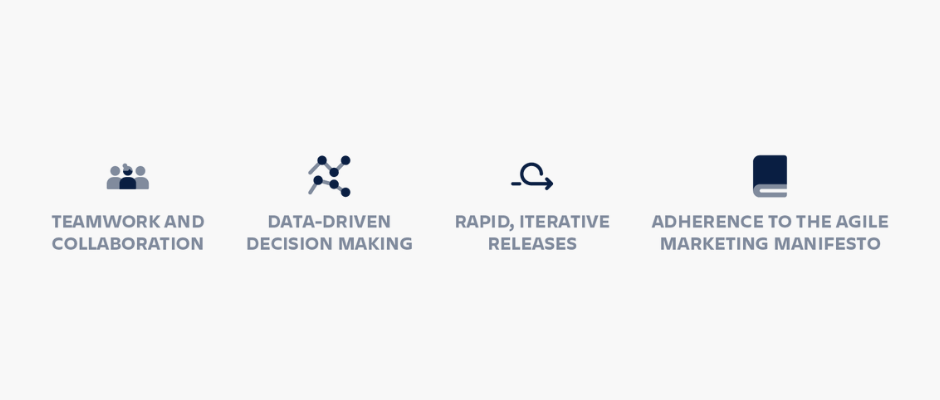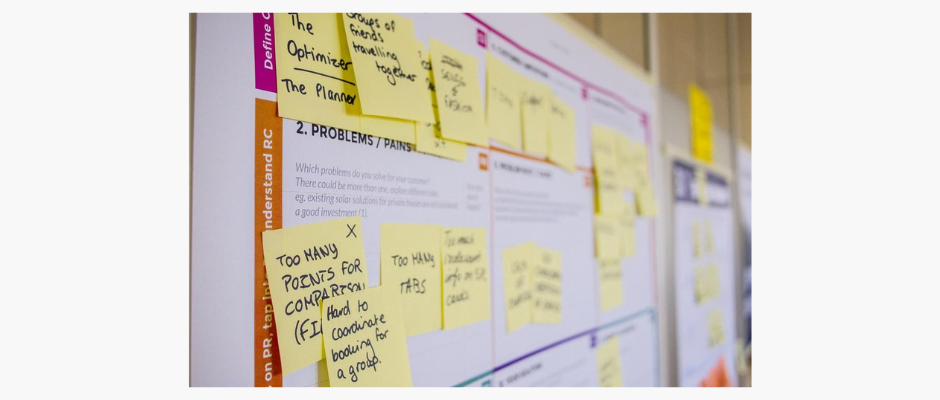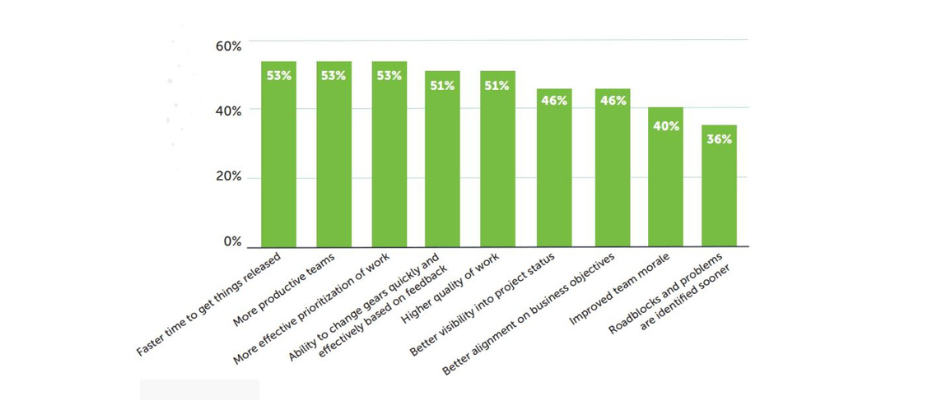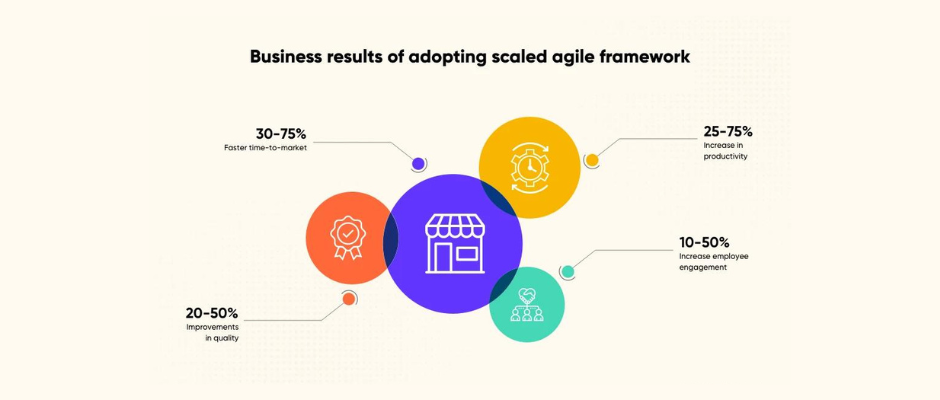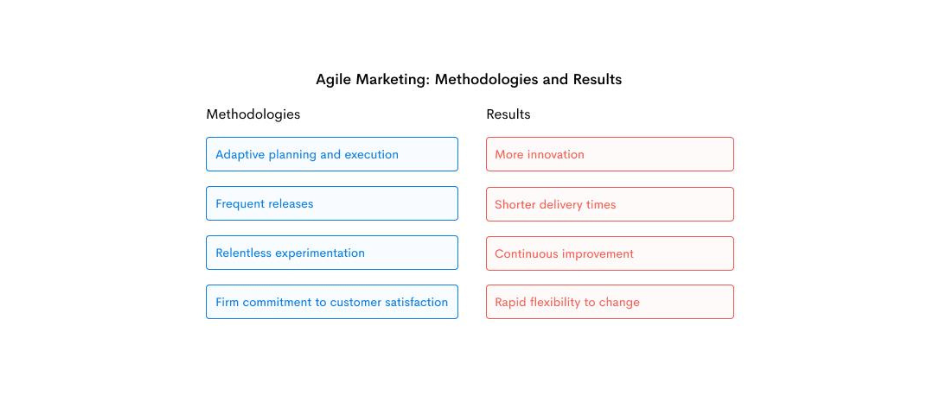Over the past years, businesses and industries have constantly shifted, demanding marketers adapt and respond with agility. The advantages of implementing Agile Methodology within the organization have gone beyond the software development to the marketing and sales department. Traditional marketing approaches are often rigid and slow to adapt to changes, hindering a brand’s ability to respond quickly to market shifts. The marketing approach that worked well last year might not work this year. So businesses must adopt modern marketing technologies to stay ahead of the game. This is where Agile Marketing comes into play.
Born from the principles of Agile software development, Agile Marketing is a dynamic, customer-centric approach that empowers marketing teams to respond swiftly and effectively to the unpredictable nature of the modern business environment. In this blog post, we have got you covered on What’s Agile Marketing, its core values and why marketers should care about it.
⚡ What is Agile Marketing?
Agile Marketing is an iterative marketing approach that emphasizes continuous adaptation, collaboration, speed, flexibility and data-driven decision-making. It breaks away from the traditional linear marketing processes and embraces an iterative and incremental approach that allows marketers to respond quickly to market shi.s and customer feedback.
Agile Marketing methodology that draws inspiration from some guiding values and principles of Agile Software development methodologies. However marketing differs from software development, agile experts like Stacey Ackerman, MarTech contributor and agile coach created an Agile Marketing Framework called “Agile Marketing Navigator” which is specifically designed for marketing teams.
⚡ Core Values of Agile Marketing
At its core, it is guided by the Agile Marketing Manifesto which outlines the core values and principles of Agile marketing. Here are the core values that manifest in this methodology;
- Focusing on customer value and business outcome over activity and outputs
Agile Marketing methodology focuses on prioritizing customer and business needs, delivering customer value through our target and relevant marketing programs. It’s all about the right things vs more things. It involves the input and collaboration of all team members who have agreed to work on the desired outcome. Customer Satisfaction is the utmost priority. As embracing this methodology within your team you should focus intensely on determining what will offer the highest value to your customers and how it impacts the downstream of the business.
- Delivering Value Early and often rather than waiting for Perfection
Aile marketing always focuses on delivering value early and often rather than waiting for perfectionism like traditional approaches. It emphasizes efficiency and feasibility, focusing on what can be implemented immediately, what existing resources can be repurposed, and whether a simple approach is sufficient to launch a campaign swiftly. The goal is to capitalize on emerging opportunities and refine strategies as we progress.
- Learning through Data and Experiments
Agile is a data-driven approach, it values data and experiments over opinions and outdated conventions. When we start experimenting, we learn and collect data. These data and learned results help to make effective marketing decisions.
- Cross-Functional Collaboration
Agile Marketing relies on collaborative cross-functional teams to focus on the customer needs. By involving customers throughout the marketing process, teams can better understand their needs, preferences, and pain points, leading to more customer-centric campaigns. It eliminates silos and hierarchies through a collaborative cross-functional team, where the team lead maintains a proper workflow and delivers better results.
- Responding to Change
It is an iterative approach that values the ability to adapt to change over sticking to a predefined plan. This flexibility enables marketers to pivot quickly in response to market shifts or emerging trends.
⚡ Why Marketers should embrace Agile Marketing?
Agile Marketing is not just a passing trend; it’s a transformative approach that addresses the challenges of the modern marketing landscape. It aims at quality over quantity, and it is results-driven which helps marketers measure success in early intervals and take quick actions if anything goes wrong.
By adhering to Agile methodologies, marketers are able to learn and experiment with new things while the campaign is moving forward. Through regular retrospectives, teams reflect on their performance, learn from both successes and failures and adjust their strategies accordingly, which helps them to make effective decisions. Moreover, it removes hierarchies and focuses on cross-functional teams; marketers can collaborate with multiple teams and departments where each individual will take responsibility beyond their job role to deliver the best result.
As marketers customers are the heart of the business, Agile Marketing methodology places the customer at the center of decision-making. Regular feedback loops with customers ensure that marketing strategies align with customer needs and preferences, resulting in more effective and resonant campaigns. Overall embracing Agile allows marketers to stay ahead in the competitive landscape.
⚡ How does Agile Marketing Work? – Introduction to Agile Framework
Although the scrum framework is the most preferred agile framework for software developers, according to the State of Agile marketing report, the majority of Agile marketers do not rigidly adhere to a particular framework in their Agile application. Instead, they opt for a hybrid approach, blending practices from Kanban, scrum, and lean to address their specific process challenges.
Let’s dive into each type to explore how it works.
- Scrum
Scrum is the widely adopted Agile framework but it is not exclusive for software development. Scrum is a framework that divides work into fixed-length iterations called sprints, usually lasting two to four weeks. It consists of two main components called ceremonies (events) and roles.
Scrum’s ceremonies consist of four meetings that aim to create effective communication within the Agile marketing team;
- Sprint Planning Meeting – It’s a sprint kick-off meeting. The team discussed the market backlog items that should be addressed in the next sprint.
- Daily Scrum or Daily Standup – It’s a daily meeting arranged to discuss the progress of the campaign and to identify the obstacles.
- Sprint Review Meeting – The main focus of the meeting is to evaluate the progress done during the sprint and determine whether the marketing backlog needs to be adjusted.
- Sprint Retrospective Meeting – It is a planned review meeting that takes place regularly, usually every two weeks. During this meeting team gathers to discuss what went well and where things could have been done better.
In the implementation of Scrum, two pivotal roles come into play; the Scrum Master and the Marketing Owner. They are responsible for overseeing the process and managing the backlog, respectively.
- Kanban
Kanban is another Agile framework that focuses on visualizing workflow and optimizing the efficiency of a team’s delivery. Unlike Scrum, Kanban doesn’t have fixed-length iterations. Instead, it allows for a continuous flow of work. Work items move through different stages on a Kanban board, providing a visual representation of the work in progress. Kanban allows marketing teams to visualize all the phases of the marketing process and every individual responsibility that passes those stages. This visualization helps marketers manage, track and monitor their marketing campaigns and identify if there are any loopholes within the team.
Core Practices Involved in Kanban;
- Workflow Visualization
- WIP (Work in progress) Limits
- Manage flow
- Make process policies explicit
- Implement feedback loops
- Continuous improvement
- Scrumban
Scrumban was developed to fill the gaps between Scrum and Kanban methodologies. It is a hybrid approach that combines elements of both Scrum and Kanban. It’s a way to leverage the structure of Scrum with the flexibility of Kanban. It is best suited for teams with some prior agile experience.
Scrum focuses on meetings and roles but fails to give guidance to the team on how to complete the work they agreed on each sprint. Meantime Kanban focuses on the completion of individual tasks. It assumes that a project management framework is in place on a team and only enhances the existing system not giving priority to create a new one. So this is where Scrumban comes to play a crucial role to fill the gap.
Scrumban is the combination of structural elements of Scrum (the ceremonies of Sprint Planning, Stand Ups, Retrospectives and the pull-based approach of Kanban. Due to the hybrid nature of the technique, every team uses scrumban in a somewhat different way.
⚡ Benefits of Agile Marketing
The adoption of Agile Marketing brings forth a myriad of benefits that contribute to the overall success of marketing teams and the organization as a whole:
✅ Improved Adaptability and Flexibility
Agile Marketing allows teams to respond quickly to changes in the market, customer feedback and internal priorities ensuring that marketing strategies remain relevant and effective. It embraces change and encourages teams to adapt their strategies and tactics based on feedback and results. As a result, it increases the productivity and efficiency within the team.
✅ Quality Results
The iterative nature of Agile Marketing allows for continuous monitoring of campaign performance. Teams can adjust strategies based on real-time data, leading to better-informed decisions and improved return on investment (ROI).
✅ Effective Collaboration and Communication
Agile Marketing promotes cross-functional collaboration by bringing together individuals from different departments or disciplines. Regular meetings, such as stand-ups and retrospectives, foster open communication and help teams stay aligned with overall goals.
✅ Faster Time-to-Market
Agile marketing is iterative in nature, focused on delivering smaller, incremental improvements, It enables quick delivery of marketing campaigns and initiatives. This is particularly beneficial in industries where speed and responsiveness are critical.
✅ Improved Transparency
Marketers always prefer enhanced visibility, Agile Marketing promotes transparency across the teams in terms of task management, campaign progress and decision-making. This can be done through Kanban Boards, daily stand-up meetings and burndown charts. It helps in identifying bottlenecks, tracking progress, and making informed decisions.
⚡ Effective tips to implement Agile Marketing within your organization
Agile Marketing is more popular among large enterprises, but it fits all kinds of businesses of any size. Implementing Agile Marketing within an organization requires a thoughtful approach and a commitment to cultural and process changes. Here are some effective tips to help you successfully implement Agile Marketing.
📌 Identify Your Goals
First and foremost identify the need of Agile Marketing within your organization. Ensure that everyone understands the overall vision and how their individual contributions align with the broader organizational objectives. Analyze your current strengths, and weaknesses of your marketing and see the possibilities of how Agile Marketing can fill those gaps for optimum results.
📌 Build a culture of collaboration
Foster a collaborative environment where cross-functional teams can work together seamlessly. Break down silos between marketing, sales, product development, and other relevant departments to encourage open communication and shared goals.
📌 Prepare Your Team
Make Sure that your teams understand the core principles and practices of Agile Marketing. In order to educate provide training sessions, workshops, and resources to familiarize them with Agile concepts, tools, and methodologies.
📌 Initiate small and scale Gradually
Start with a trial or pilot project with your Agile team to test how Agile methodologies work within your organization. Use the insights gained from the pilot run to refine processes and address challenges before scaling Agile practices across the entire marketing organization.
📌 Choose an Agile Framework
Select an Agile framework such as Scrum, Kanban and scrumban that aligns with your organization’s needs. Tailor the chosen framework to fit the specific requirements of your marketing teams. Once chosen you will be able to identify whether you need daily standups, coordination among the teams and the status of all the campaigns in a single tap.
📌 Embrace Growth mindset
Foster a culture of continuous learning and improvement. Encourage team members to experiment, learn from failures, and continuously adapt their approaches based on feedback and data.
🔥 Wrapping Up – Get Started with Agile Marketing
Agile Marketing is not just a strategy; it’s the future of marketing excellence. As the business landscape continuously evolves, Agile Marketing emerges as a beacon of innovation, providing a clear path for those who aspire to stay ahead of the curve and consistently deliver meaningful results. By embracing the Agile mindset, fostering collaboration, and staying attuned to customer needs, your team can navigate the dynamic landscape with confidence and deliver campaigns that resonate in today’s fast-paced world.
As you start your Agile Marketing Journey, remember that it’s not about having all the answers from the start but about being open to continuous learning and improvement. Each sprint, each iteration, brings valuable insights that fuel the next phase of innovation. So, gear up, rally your team, and step onto the path of Agile Marketing success—it’s time to make your mark!


